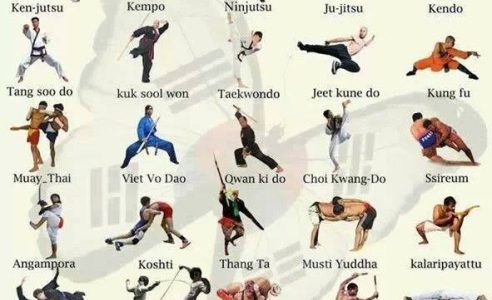Typical Martial Arts And Modern Fight Sports: An Extensive Introduction Of Their Unique Differences
Typical Martial Arts And Modern Fight Sports: An Extensive Introduction Of Their Unique Differences
Blog Article
Authored By-Keith Fink
When you think about martial arts, do you lean extra towards the typical techniques or the modern battle sporting activities? Each path uses unique advantages and experiences, formed by their ideologies and training methods. Standard martial arts emphasize personal growth and self-control, while modern fight sports concentrate on competitors and performance. Understanding these distinctions can guide you in choosing the appropriate approach for your journey. However how do these differences materialize in training and philosophy?
The Approach and History Behind Traditional Martial arts
While many individuals connect martial arts with physical battle, the philosophy and background behind conventional martial arts run much deeper. You'll locate that these self-controls stress personal development, self-control, and regard.
Originating from old techniques, standard martial arts were often established for Self-Defense and spiritual advancement. martial arts list embody principles such as balance, harmony, and self-discipline, directing professionals beyond simple combating abilities.
As you train, you'll not only learn methods however additionally acquire understandings into the society and worths that formed these arts. The routines and traditions, frequently passed down via generations, foster a feeling of community and belonging.
The Competitive Nature of Modern Fight Sports
Modern combat sports have changed the landscape of martial arts into an extremely affordable arena, where professional athletes challenge in an examination of skill, approach, and endurance.
You'll notice that competitions are commonly organized with strict rules and guidelines, making certain fair game and safety. These events attract large target markets, sustaining the excitement and intensity of competitions.
view site… educate carefully, not just for physical prowess however additionally for mental durability, understanding that every information counts in the ring. The adrenaline rush during competitors is palpable, as boxers press their restrictions to assert victory.
Fans value the athleticism and artistry involved, making modern fight sporting activities a thrilling phenomenon that remains to advance and mesmerize fanatics around the world.
Training Methods and Methods: A Comparative Analysis
The competitive environment of modern battle sports demands innovative training techniques that differ significantly from typical martial arts.
In modern-day training, you'll focus on particular techniques, competing, and conditioning, commonly using drills that mimic actual fight circumstances. You'll see an emphasis on measurable efficiency and constant competition to examine your abilities.
In contrast, conventional martial arts focus on forms, katas, and philosophical mentors, often stressing technique and respect over competitors.
is boxing a martial art is usually much less extreme and may include recurring technique as opposed to real-time sparring.
While both strategies build skill and health and fitness, modern fight sporting activities give a much more dynamic and versatile training setting, preparing you for immediate difficulties in the ring or cage.
Choose the course that straightens with your objectives and interests.
Conclusion
In selecting in between standard martial arts and modern battle sporting activities, it actually comes down to what you value most. If you're searching for personal growth, self-control, and a sense of community, standard arts might be your ideal fit. But if you thrive on competition and real-time difficulties, modern-day combat sporting activities could be the means to go. Ultimately, both courses supply one-of-a-kind benefits, so it's everything about aligning your training with your personal objectives and passions.
